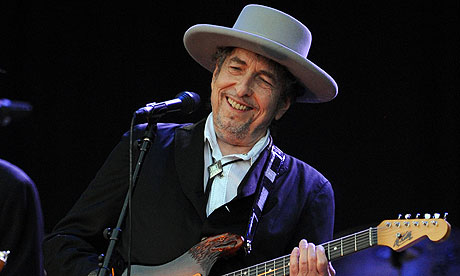
Category Archives: Music
Stream Hackett’s upcoming ‘Genesis Revisited II’
Actually, the song is called Cargo Cult, but anyway…
Here’s the video:
Feel the ‘Glow’ of Kaki King
From the new interview with Guitar World:
You can get a haircut, you can go shopping for the proper shoes, but you really can’t make your music better unless you work on it.
“Perhaps we steer ourselves, dreamlike, past all the other possibilities; or perhaps we are steered.”
The latest from Peter Hammill, who’s output as a solo artist and as the de facto leader of Van der Graaf Generator puts him in the same rarefied strata as the late Frank Zappa. His irregular updates tend to include such poetical and lyrical observations as:
In any event we end up where we are.
As I say, quite as much is built on randomness and accident as on best-laid plans, most of which are overtaken by circumstance in any case.
If you love ‘classic’ Genesis, then this track-by-track commentary by Steve Hackett will give you chills
‘Genesis Revisited 2’ is Hackett’s second album reinterpreting the music of his youth. It comes out in late October and boasts a slew of special guests.
Here’s what Steve has to say about ‘Fly on a Windshield’ from The Lamb Lies Down on Broadway:
Influences in this powerful piece range from Ravel to Hendrix, with the ramming speed of Ben Hur along with echoes of the Egyptian pyramids, all brought to life under the watchful towers of New York. A wall of sound meets the wall of death. In this new version the guitar sometimes screams like slaves under the whip.
And on ‘Dancing With The Moonlit Knight’:
This is possibly my favourite Genesis song, with influences ranging from Scottish plainsong to fusion… Elgar meets Brave new World. It epitomises the character and magic of early Genesis. It features tapping, nylon and twelve strings. Jeremy Stacey’s drums give this version even more precision. The “Disney” section at the end has an English pastoral hypnotic feel – a thread to the world of Spencer’s Fairy Queen – a small corner of England remaining while the rest is sold off as a job lot plunging headlong into an alienated future. In this version I started this piece with the beginning of Greensleeves to give a sense of the old English thread and the poignancy of the song, which Francis Dunnery’s sensitive vocal also expresses.
Surprisingly cogent observations on Dylan in context of his relationship with John Lennon
From The Atlantic, on why Dylan included a song about John Lennon on the new album Tempest:
Because Dylan deals in myth. It informs his output as much, if not more, than the actual people in his life. Dylan uses motifs like floods and trains in order to wrestle universalities down and trap them in his verses. He, like Lennon, will always be associated with the 1960s, but more than any other major artist from that period he has always written songs that are designed to transcend the context in which they were created.
Marillion – Sounds That Can’t Be Made
They seem more comfortable in their own skin than ever. The strength of emotion is at a high point, both musically and lyrically.
The joy of creation and discovery – John McLaughlin shredding at 70
I still find new things. I wake up and pick up the guitar, and even if I don’t have anything in my head, I’ll discover something incredible. This happens to me every day. Every day, I discover something utterly unbelievable when I play. In the end… I don’t think we can get to the end. I’m going to die saying, ‘Can I have one more day?’ [laughs] Because the pleasure of discovery is just unequalled.”
From Music Radar.
This project makes me very happy
The folks from Joe Zawinul’s band have recorded an album and are playing some live shows. This video is so utterly charming, complete with spaghetti dinner.





